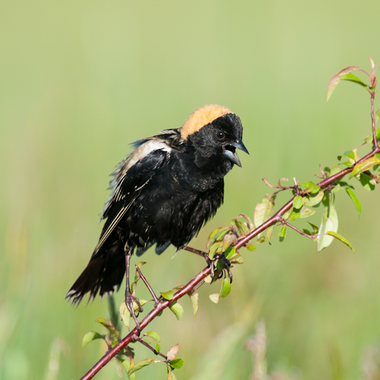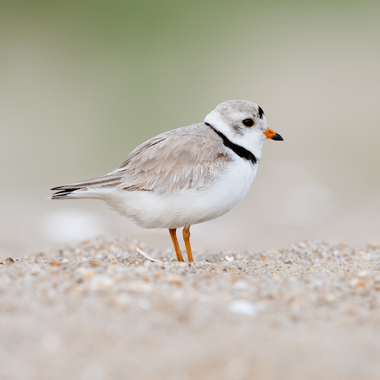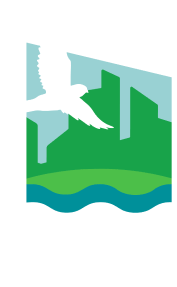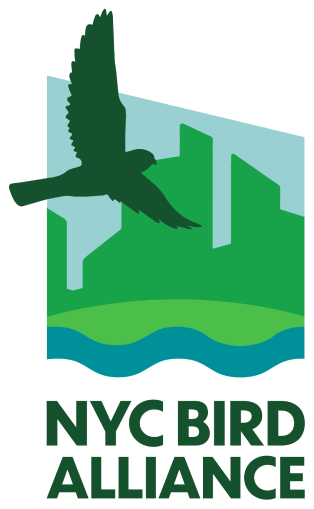Name Change FAQs
Monk Parakeets at Green-Wood Cemetery. PC: Mike Yuan.
In Spring 2023, the leadership of NYC Audubon (now known as NYC Bird Alliance) began the process to change the organization’s name by dropping “Audubon” and choosing a new name that better reflects our organizational values and our work. We embarked on a collaborative and robust process to select a new name that encapsulates who we are and what we do, and that is inclusive and welcoming to all New Yorkers. Our new name, "NYC Bird Alliance", became official with a vote by membership on June 5, 2024.
Here are some answers to questions that might be on your mind.
Here are some answers to questions that might be on your mind.
What's your new name?
Our new legal name is New York City Bird Alliance, Inc. We will usually go by NYC Bird Alliance. You can learn more about why we chose that name here.
How does changing the name help your work?
Birds are in peril and it will take everyone’s involvement to protect them. Since 1970, the number of individual birds in North America has declined by approximately three billion. And scientists estimate that by 2080, nearly two-thirds of North American bird species will have lost more than half of their range due to urbanization and climate change. (In New York City, you can see which bird species are most in jeopardy using this tool.)
We are a bird conservation organization. To save birds, we need allies, partners, and broad popular support. A name once chosen for its popular appeal and association with beautiful images of birds is now associated with slavery and racism. As a result, that name has become a barrier to people who might otherwise become involved in or support our work. We have decided we must take active steps to remove that barrier. The more people who hear our message and help us save bird populations, the better. The protection of birds depends on the work and support across all of the City’s communities.
For the sake of the Piping Plover, Philadelphia Vireo, Golden-winged Warbler, Cerulean Warbler, Bobolink, Saltmarsh Sparrow, Fish Crow, and many other species, we need help. We cannot allow our name to be a barrier to our conservation, advocacy, and engagement work.

Bobolink. Photo: Bookguy / Getty Images

Piping Plover. Photo: Harry Collins / Getty Images

Golden-winged Warbler. Photo: Raymond Hennessey
A name change isn’t enough. How are you going to engage diverse audiences?
NYC Bird Alliance has been working to engage diverse audiences for a long time and is committed to expanding this work, whether through our NYCHA in Nature program, our Spanish-English bird guide, or the hundreds of free bird outings we host each year, including several in multiple languages and with physical accessibility in mind.
Through all of these efforts and more, we continue to work to engage New Yorkers in the amazing world of birds with a strong commitment to Equity, Diversity, Inclusivity, and Accessibility.
What was your assessment process?
Our organization undertook a thorough and deliberate process, over eight months, before deciding to drop “Audubon” ; we then took another year to come up with a new name, involving our entire audience of stakeholders from members and supporters to volunteers and partner organizations. Here's how we did it:
In August 2022, our board and staff leadership mapped out a detailed process to assess the "Audubon" name and legacy, and what it means to our work today.
During Fall 2022, our committees (made up of Board, staff, and Advisory Council members) made the Audubon name a focal point of their quarterly meetings, looking at how the name positively and negatively affected the strategic work of each committee, from Conservation and Education & Public Programs, to Finance and Fundraising. Our EDIA committee considered its objective—to foster and ensure diverse representation within both the organization and the larger environmental conservation movement—and the Audubon name’s impact on it. Committees shared their assessments with the full board. At year-end we held a special single-topic board meeting and invited every board member to share more personal perspectives. Similarly, our staff also held a single-topic meeting to consider the Audubon name.
In early 2023 we held events and sent communications to solicit input, and heard from approximately 400 supporters, including members, donors, and institutional funders. We discussed the issue with dozens of strategic partners, including conservation research groups, conservancies managing public green spaces, and education organizations. We discussed the Audubon name and legacy with our longtime members and collected perspectives from younger members. We talked to lifelong birders and those who developed an interest in birds more recently.
Ultimately, what we learned is that our bird and habitat protection efforts cannot succeed without work and support across all of the City’s communities. We believe that the Audubon name stood in our way.
Following this extensive process, we held a special board session in March 2023, and the board of directors voted to begin the process of selecting a new name.
How did you decide on the new name, NYC Bird Alliance?
Throughout 2023, we undertook a robust and inclusive process to collect hundreds of name suggestions. Our Name Change Task Force narrowed the list down to a set of Top 5 names, and then in early 2024, we actively sought feedback and received feedback from more than 1,000 people - including hundreds of members - on those five names. In March 2024 our Name Change Task Force made a recommendation to our board of directors on two final names, and our board of directors chose NYC Bird Alliance. The final name was then approved by our members at the organizaton's Annual Meeting of Members in June 2024.
You can read more about the name selection process here.
You can read more about the name selection process here.
Don’t you rely on name recognition to do your work in saving birds?
Yes, we do, and we know that in changing our name, we may have to work harder to introduce ourselves to new partners and new people. But we have 45 years of work on behalf of birds in the five boroughs of NYC to stand on and amplify. We’ve helped New York City pass the most robust bird-safe building design laws in the country. We monitor artificial light and its effect on migratory birds, including at the 9/11 Memorial and Museum. We work to study and expand the use of amazing green roofs like the magnificent one at the Javits Center. We study waterbirds like herons and egrets, and we monitor coastal habitat. So yes, we will have to work to remind people that we are the same committed people, doing the same important work in the greatest city in the world, on the Atlantic flyway—just by a new name.
At the same time, we heard throughout our assessment process that for many people, the Audubon name has little or no recognition. We realized there was an opportunity to choose a name that better represented and more clearly signaled what we do.
Who was John James Audubon?
John James Audubon was an accomplished 19th-century artist and naturalist. However his views and actions towards people of color remain harmful today. Read more about John James Audubon here.
Are you still an Audubon chapter?
NYC Bird Alliance remains a chapter of the National Audubon Society, with whom we share a commitment to bird conservation amid a global climate crisis, biodiversity loss, and habitat degradation. You can read more about National Audubon and the chapter network here.


